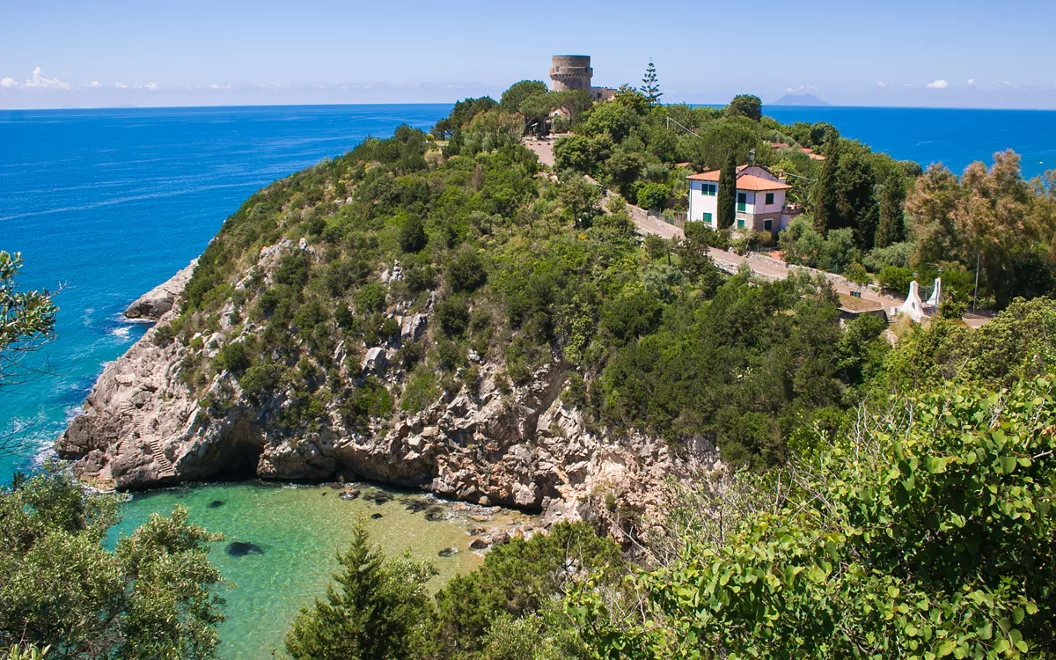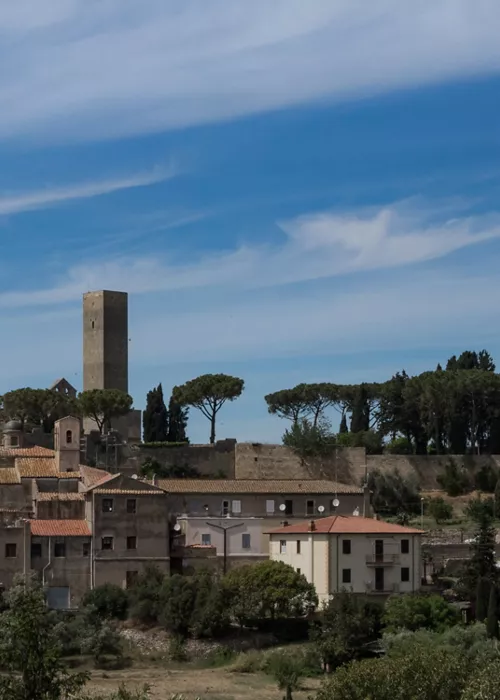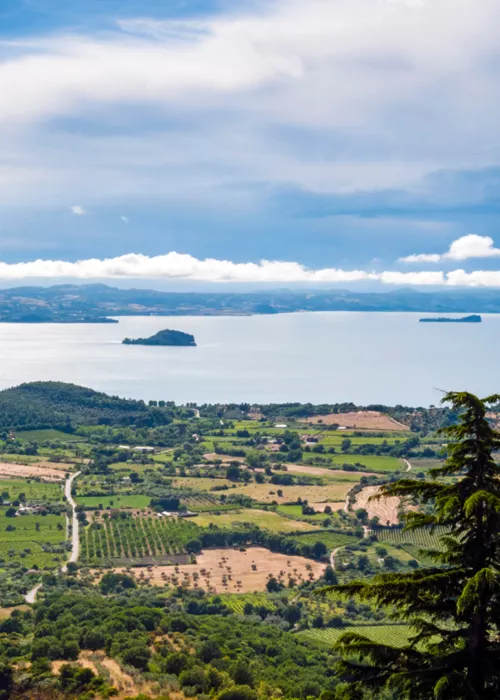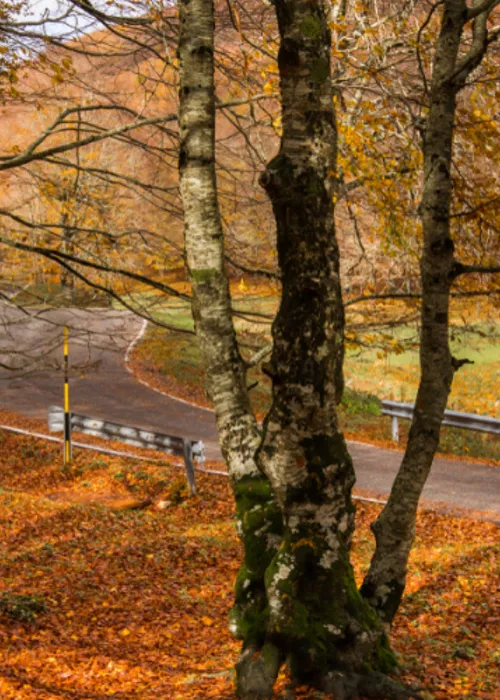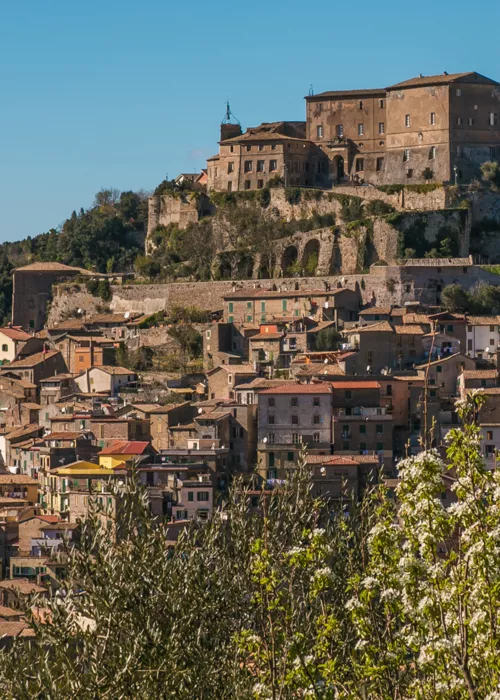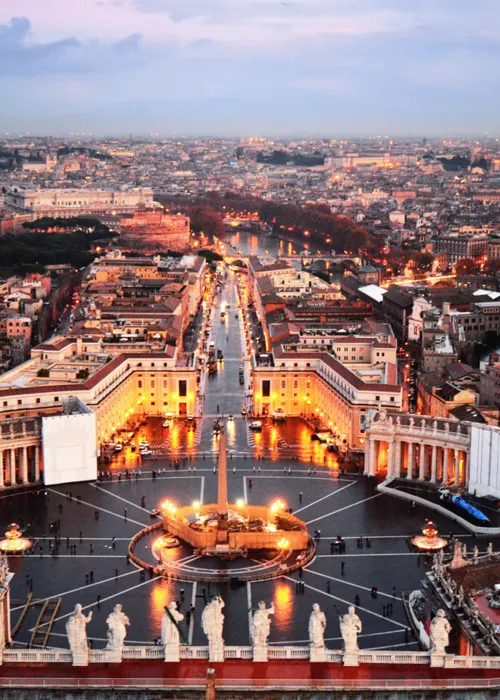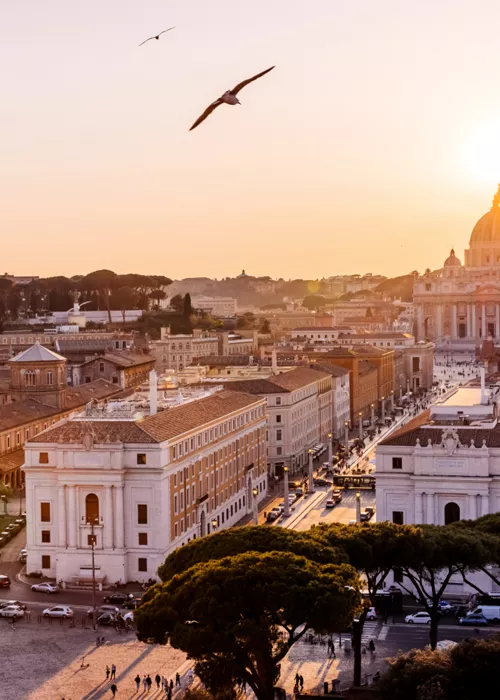Terracina

We are in the Agro Pontino where the stretch of the ancient via Appia runs, which has been nicknamed the 'fettuccia di [webbing of] Terracina'. In fact, it is a roughly 50km straight where it feels like being in another era, with the Roman dandies of the 1950s speeding by in their Lancia Aurelia coupés. On either side of the road are maritime pines, plane and eucalyptus trees and superb natural scenery. At the far end of the Pontine plain is Terracina, with the ancient core at the top and the modern part extending between the Appian Way and the sea. On its summit, the myth tells that Ulysses climbed to look around and see the profile of Circeo inhabited by the Sorceress Circe. After all, everything here speaks of the classical civilisation, starting with the colossal ruins of the Roman acropolis with the Temple of Jupiter Anxur on a terrace of Mount Sant'Angelo overlooking the sea.
While the city itself is fascinating for its contrasting mix of Roman remains, and medieval streets dominated by the scenic Temple ruins, in a combination that even Goethe fell in love with in his Italian Journey. The Borgo Marino, on the other hand, is the modern part of the city with its lively waterfront and the canal-harbour overlooked by numerous restaurants and clubs. A cuisine, that of Terracina, that well combines the two souls of this land. Leaning over the sea but with its roots firmly planted on the land, the city knows how to give the palate unique sensations. The fertile land furrowed by the reclaimed canals adds unique notes to the fish that a wonderful sea can offer. The beaches are flying the two Sails of the Italian Touring Club and Legambiente. With a shallow seabed and suitable for water sports and surfing, among the most popular are the Ponente, a sandy beach of fine golden sand about 3 km long and mostly equipped, and the Levante.
In the immediate hinterland, about 10 km away that can also be reached by bicycle, a scenic curiosity is the natural monument of Campo Soriano: a karstic basin of the Ausoni mountains in which immense limestone boulders rise up between olive trees and meadows like towers and pinnacles sculpted by the action of the elements.
Take the time to enjoy this magnificent city: lose yourself in its streets, dive into its splendid sea, and perhaps, in the evening, absorb its essence by relaxing on its waterfront while sipping a glass of Moscato di Terracina IGT.
Sperlonga

Among the southern coastal towns of Lazio, Sperlonga is definitely a fashionable summer spot. Its attractive mediaeval centre of white houses on a rocky spur more than 60 metres above the sea, teems throughout the summer with its narrow streets, small shops and restaurants, and also with its two inviting sandy beaches on either side of a headland, awarded three Sails by the Italian Touring Club and Legambiente. There are kilometres of sandy shoreline, to the west with long stretches of beach umbrellas in the direction of Lake Lungo and Lido di Fondi, and to the east towards the beach at Angolo and the jagged coastline of Bazzano, rich in ravines, sea caves and inlets often only accessible by sea or by steep paths and where snorkelling enthusiasts can enjoy themselves.
Apart from the beaches and the incredible view from the top of the old town, the main attractions are the National Archaeological Museum, where you can admire Hellenistic sculptures and masks dating from the 2nd century A.D. fragments recovered from the Villa Tiberio, and the villa itself, a sumptuous residence of the Emperor Tiberius. From the museum, one descends through the olive trees to the urban part of the villa and reaches the cave open to the sea.
A true pearl, then, Sperlonga, is to be admired and experienced. The natural beauty, the artistic and archaeological heritage, the delightful beaches and the vitality of the historic centre are the ingredients that make this Latium village a unique place. An apéritif or an after-dinner drink in the piazzetta allows you to savour the delicacies of this land and experience the carefree atmosphere of a holiday immersed in rare beauty.
Gaeta

The stretch of coastline between Sperlonga and Gaeta is among the most beautiful in Italy: 10 kilometres of beaches and inlets, mostly nature reserve and protected marine reserve of the Riviera di Ulisse Regional Park, which can be travelled at a leisurely pace. Gaeta can be seen stretching out over the sea as if it were the prow of a ship. The historic centre, a maze of alleyways, stairways and small slarghi, is a journey through ancient mediaeval palazzi, some of which have been converted into b&b's and taverns for savouring good seafood cuisine: this is old Gaeta. Situated on a peninsula that extends the headland, it constitutes the mediaeval quarter of the city, entirely covered by a network of alleys overlooking the sea. It is natural to get lost among these narrow streets, discovering towers, stairways, ancient churches and old mansions, bell towers and artisans' shops. Then there is the Caboto seafront promenade, with its glimpse of the blue sea dotted with boats, the coastal town and the historic centre where you can spend the evening delighting your palate with the many dishes of typical Gaetan cuisine. The queen of the table is definitely the Tiella, a rustic cake filled with vegetables or fish, which highlights this city's strong link with the sea and the land.
Among the treasures to be visited are the sanctuary of the Santissima Annunziata, the cathedral dedicated to St Erasmus with its Romanesque arabesque bell tower and the Angevin-Aragonese castle. While on the summit of Mount Orlando is the Mausoleum of Lucius Munazio Planco to which one ascends by a path through the vegetation. And on the south-western slopes of the mountain, the sanctuary of the Madonna Spaccata, with the cliff and the Grotta del Turco.
Just outside the town, along Via Flacca you reach the beaches, which have been awarded three Sails by the Italian Touring Club and Legambiente and still retain their natural charm, especially out of season. Beyond the long sandy shore of Serapo begins the most beautiful stretch of road, between rock, sea, Mediterranean scrub and ancient towers on the rocky foothills. The small beach of Fontania preserves the remains of a magnificent Roman villa from the 1st century AD.
Accessible only by boat or by swimming: the 40 Oars beach, famous for its caves, crystal-clear water and the Devil's Well, a 50-metre drop that suddenly appears in the rock and sinks into the sea, a real diver's paradise. Continuing northwards, you come to Aeronauta beach, which can be reached on foot by climbing down three hundred steps. The sand is fine and golden, the sea crystal clear with shallow waters.
Formia

Bathing in the clean waters of the Gulf of Gaeta, awarded three Sails by the Italian Touring Club and Legambiente, and exploring the ancient traces of a flourishing past scattered here and there: Formia offers you this. The town is modern and commercial but behind these aspects there are unexpected gems of Roman archaeology. There are remains linked to the name of Cicero, who took shelter here while fleeing from Rome, lived here at lenth and died here, assassinated. On the coast road leading to the sea, you can still make out the foundations of his villa, a luxurious imperial era residence; while on the Appian Way, you can see his mausoleum, named the tomb of Cicero, a cylindrical tower overlooking the gulf. But the ancient attractions do not end there; there are Roman statues from the forum and sculptures from the luxurious patrician coastal villas on display at the National Archaeological Museum.
After the ravages of the Saracens, the town still retains its two medieval villages: the 10th century seaside district of Mola, and the older Castellone village, on the hillside where the ancient Roman acropolis stood.
The seafront, however, changed in appearance after the Second World War, with a modern harbour from which ferries sail to the Pontine Islands, also for exotic day trips.
The beaches offer opportunities for everyone. Vindicio beach is frequented by surfers and young people, Sant'Agostino beach is quiet and scenic, and Sassolini Bay is a more intimate oasis for relaxation, with its pebble bottom and crystal clear water.
You cannot leave Formia without having tasted spaghetti alla Formiana, a first course seasoned with mussels and shrimp, to be paired with a good Lazio IGT white wine.

